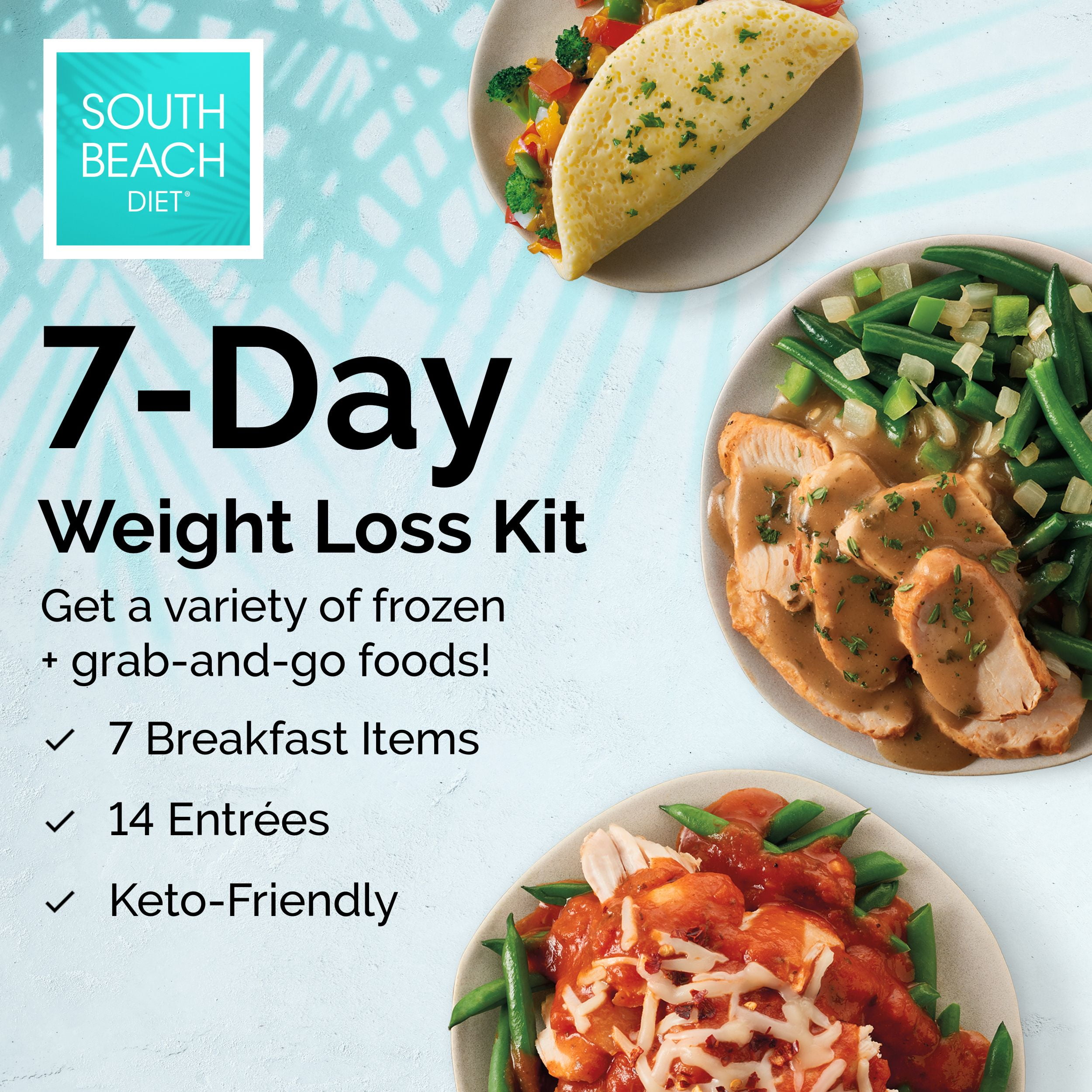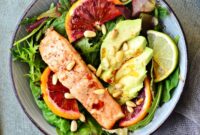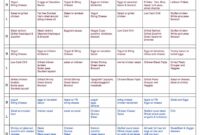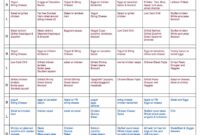South Beach Diet Phase 1 rules form the foundation of this popular weight-loss plan. This initial phase emphasizes a low-glycemic approach, restricting certain carbohydrates while prioritizing healthy fats and lean proteins. Understanding these rules is crucial for successful weight management and improved overall health. This guide delves into the specifics of Phase 1, offering meal plans, recipe ideas, and strategies to overcome common challenges.
The South Beach Diet’s Phase 1 focuses on rapid weight loss by eliminating simple carbohydrates and refined sugars that trigger insulin spikes. This initial phase, typically lasting two weeks, sets the stage for long-term lifestyle changes. By focusing on nutrient-dense foods, the diet aims to improve energy levels, reduce cravings, and establish healthier eating habits. The transition to subsequent phases is gradual, allowing for the reintroduction of more carbohydrates while maintaining a balanced and sustainable approach to nutrition.
Overview of South Beach Diet Phase 1
South Beach Diet Phase 1 is the initial, restrictive phase designed to jumpstart weight loss and improve metabolic health. It focuses on eliminating foods that trigger rapid blood sugar spikes, leading to increased insulin production and fat storage. This initial phase lays the groundwork for long-term healthy eating habits.
Phase 1 is characterized by its strict limitations on certain carbohydrate types, emphasizing healthy fats and lean proteins. This approach aims to stabilize blood sugar levels, reduce cravings, and promote early weight loss, providing motivation for continued adherence to the diet’s principles.
Phase 1 Timeframe
Phase 1 of the South Beach Diet typically lasts for two weeks. This timeframe allows for significant initial weight loss and establishes the dietary patterns for subsequent phases. Extending this phase beyond two weeks is generally not recommended, as it can become overly restrictive and potentially unsustainable in the long run.
Rationale Behind Phase 1 Restrictions
The restrictions in Phase 1 are primarily focused on eliminating simple carbohydrates and unhealthy fats. Simple carbohydrates, such as refined sugars and processed grains, cause rapid spikes in blood sugar, leading to insulin resistance and increased fat storage. Unhealthy fats, like those found in trans fats and saturated fats from processed foods, contribute to elevated cholesterol levels and other health problems. By removing these foods, the diet aims to regulate blood sugar, improve insulin sensitivity, and reduce inflammation.
Sample Daily Meal Plan (Phase 1)
A sample daily meal plan for South Beach Diet Phase 1 might include:
* Breakfast: Scrambled eggs with spinach and a small portion of avocado.
* Lunch: Grilled chicken salad with mixed greens, tomatoes, cucumbers, and a light vinaigrette dressing.
* Dinner: Baked salmon with steamed broccoli and a small serving of quinoa.
* Snacks: A handful of almonds, a piece of fruit (berries are preferred), or a small amount of Greek yogurt.
It is crucial to emphasize portion control and the selection of lean proteins and healthy fats throughout the day.
Comparison of South Beach Diet Phases
| Feature | Phase 1 (2 weeks) | Phase 2 (2-6 months) | Phase 3 (Maintenance) |
|---|---|---|---|
| Carbohydrate Restriction | Strict; eliminates simple carbs, high-glycemic fruits | Moderate; gradual reintroduction of some healthy carbs | Flexible; focus on healthy carb choices in moderation |
| Fat Intake | Emphasis on healthy fats (monounsaturated, polyunsaturated) | Emphasis on healthy fats | Emphasis on healthy fats |
| Protein Intake | High; lean protein sources are prioritized | High; lean protein sources are prioritized | Moderate; lean protein sources are still important |
| Weight Loss Goal | Rapid initial weight loss | Continued, sustainable weight loss | Weight maintenance; preventing weight regain |
Recipe Ideas for Phase 1
The South Beach Diet Phase 1 emphasizes lean protein, healthy fats, and non-starchy vegetables. These recipes provide delicious and satisfying meal options that adhere strictly to the Phase 1 guidelines, ensuring you stay on track with your weight loss goals while enjoying flavorful and nutritious food. Remember to always check nutrition labels to ensure ingredients align with Phase 1 restrictions.
Breakfast Recipes
These breakfast recipes are designed to be quick, easy, and packed with nutrients to fuel your morning and keep you feeling full until lunchtime. They prioritize protein and healthy fats while avoiding sugary cereals and processed foods.
| Recipe Name | Ingredients | Instructions |
|---|---|---|
| Spinach and Feta Omelet | 2 eggs, 1 cup spinach, 1 tbsp crumbled feta cheese, 1 tsp olive oil | Sauté spinach in olive oil. Whisk eggs and pour over spinach. Sprinkle with feta. Cook until set. |
| Smoked Salmon and Avocado Toast | 1 slice whole-wheat toast, 2 oz smoked salmon, ½ avocado, ¼ lemon | Toast bread. Mash avocado and spread on toast. Top with smoked salmon and a squeeze of lemon. |
| Berry Greek Yogurt Parfait | ½ cup plain Greek yogurt (full-fat), ½ cup mixed berries (strawberries, blueberries, raspberries), 1 tbsp chopped almonds | Layer yogurt, berries, and almonds in a glass or bowl. |
Lunch Recipes
These lunch recipes provide satisfying and protein-rich meals that will keep you energized throughout the afternoon. They focus on lean protein sources and plenty of non-starchy vegetables to keep you feeling full and satisfied without the sugar crash.
| Recipe Name | Ingredients | Instructions |
|---|---|---|
| Chicken Salad Lettuce Wraps | 4 oz cooked chicken breast (shredded), 2 tbsp plain Greek yogurt, 1 tbsp chopped celery, lettuce leaves | Combine chicken, yogurt, and celery. Serve in lettuce cups. |
| Tuna Salad with Cucumber and Tomatoes | 4 oz canned tuna in water (drained), 1 tbsp mayonnaise (look for lower-carb options), ½ cucumber (diced), ½ cup cherry tomatoes (halved) | Combine tuna, mayonnaise, cucumber, and tomatoes. |
| Leftover Dinner Salad | Leftover grilled chicken or fish, mixed greens, non-starchy vegetables (e.g., bell peppers, broccoli), olive oil and vinegar dressing | Combine all ingredients in a bowl. |
Dinner Recipes
These dinner recipes are designed to be flavorful and satisfying, incorporating lean protein, healthy fats, and plenty of non-starchy vegetables. They avoid high-glycemic carbohydrates to support weight loss and maintain stable blood sugar levels.
| Recipe Name | Ingredients | Instructions |
|---|---|---|
| Grilled Salmon with Asparagus | 4 oz salmon fillet, 1 cup asparagus, 1 tsp olive oil, salt and pepper | Toss asparagus with olive oil, salt, and pepper. Grill salmon and asparagus until cooked through. |
| Chicken Stir-fry with Broccoli and Peppers | 4 oz chicken breast (sliced), 1 cup broccoli florets, 1 bell pepper (sliced), 1 tbsp soy sauce (low sodium), 1 tsp olive oil | Stir-fry chicken, broccoli, and pepper in olive oil. Season with soy sauce. |
| Shrimp Scampi with Zucchini Noodles | 4 oz shrimp (peeled and deveined), 2 medium zucchini (spiralized), 2 cloves garlic (minced), 2 tbsp olive oil, lemon juice, salt and pepper | Sauté garlic in olive oil. Add shrimp and zucchini noodles. Cook until shrimp is pink and zucchini is tender. Season with lemon juice, salt, and pepper. |
Shopping List and Meal Preparation for Phase 1
Efficient meal preparation is key to successful adherence to the South Beach Diet Phase 1. Planning ahead minimizes impulsive unhealthy food choices and saves time during the week. This section provides a sample shopping list and practical meal preparation strategies to streamline your Phase 1 experience.
Sample Shopping List for a Week of Phase 1
This shopping list is designed for one person and can be easily scaled up or down depending on your needs. Remember to always check for freshness and choose organic options whenever possible.
- Protein Sources: Chicken breast (2 lbs), Salmon fillet (1 lb), Eggs (1 dozen), Canned tuna (2 cans), Greek yogurt (1 container)
- Healthy Fats: Avocado (2), Olive oil, Nuts (almonds, walnuts – ½ cup each)
- Vegetables: Spinach (1 container), Broccoli (1 head), Asparagus (1 bunch), Bell peppers (2), Onions (2), Cucumber (1), Tomatoes (1 pint), Garlic (1 bulb)
- Fruits (limited, focus on lower-glycemic options): Berries (strawberries, blueberries – 1 pint each), Lemon (1)
- Other: Unsweetened almond milk (1 carton), Plain whole wheat bread (1 loaf), Herbs and spices (salt, pepper, oregano, basil, cumin)
Meal Preparation Strategies for Phase 1
Preparing meals in advance significantly reduces the temptation to stray from the diet. Batch cooking key components allows for quick and easy assembly of meals throughout the week.
For example, you can roast a large batch of chicken breast and vegetables (like broccoli and bell peppers) at the beginning of the week. This roasted chicken can then be used in salads, added to omelets, or enjoyed as a simple meal with a side of steamed asparagus. Similarly, hard-boil a dozen eggs for quick breakfasts or snacks. Prepare a large container of spinach salad with a simple vinaigrette dressing to enjoy throughout the week. Remember to store leftovers properly in airtight containers to maintain freshness and prevent bacterial growth.
Efficient Meal Prep Techniques for Phase 1
Efficient meal preparation hinges on organization and time management. Dedicate a specific time slot each week, perhaps on a Sunday afternoon, for prepping ingredients and cooking meals.
Utilize techniques like chopping vegetables in advance and storing them in separate containers. This minimizes prep time during the week. Consider using a slow cooker or Instant Pot to prepare large batches of meals with minimal effort. Freezing portions of meals is also a great way to save time and reduce food waste. For instance, individual portions of chicken and vegetable stir-fry can be frozen for quick and healthy meals later in the week.
Tips for Minimizing Food Waste During Phase 1
Careful planning and smart shopping practices significantly reduce food waste. Create a detailed shopping list based on your planned meals to avoid buying excess food. Use leftovers creatively; for example, leftover roasted chicken can be added to salads or used in omelets. Store perishable items properly to extend their shelf life. Learn to identify signs of spoilage to prevent consuming expired food. Compost food scraps whenever possible.
Summary
Mastering the South Beach Diet Phase 1 rules empowers you to embark on a transformative journey towards improved health and well-being. While initial challenges might arise, the potential rewards—weight loss, increased energy, and improved metabolic function—are significant. Remember, consistency and mindful eating are key to long-term success. By adhering to the guidelines, incorporating delicious recipes, and addressing potential hurdles proactively, you can pave the way for a healthier, happier you.




